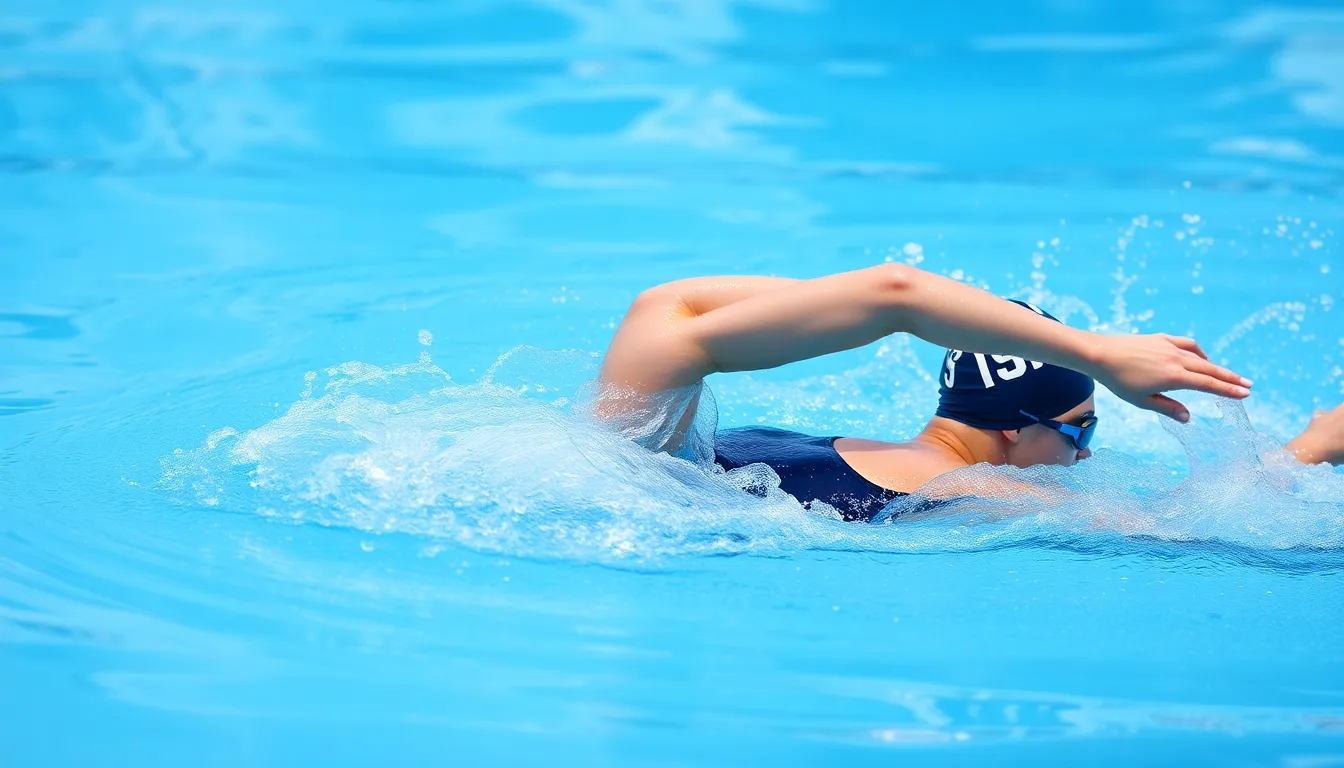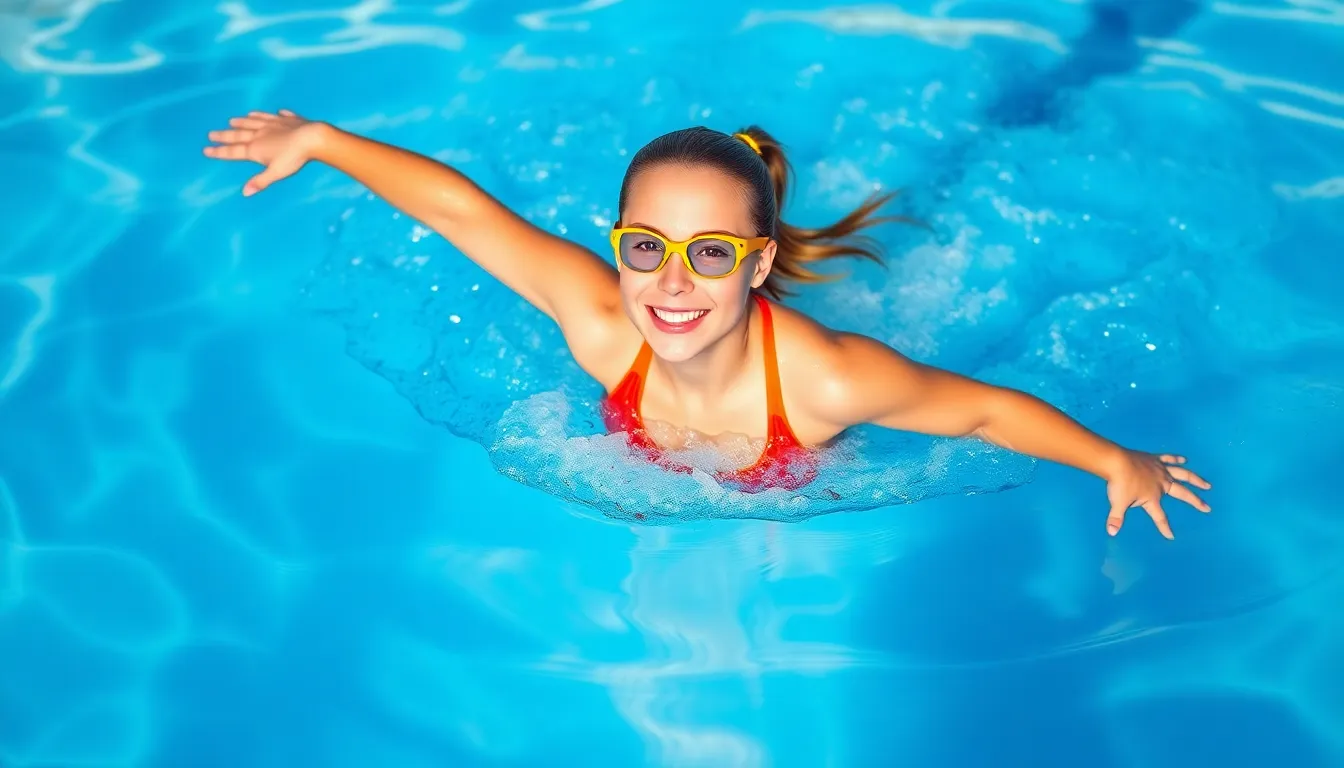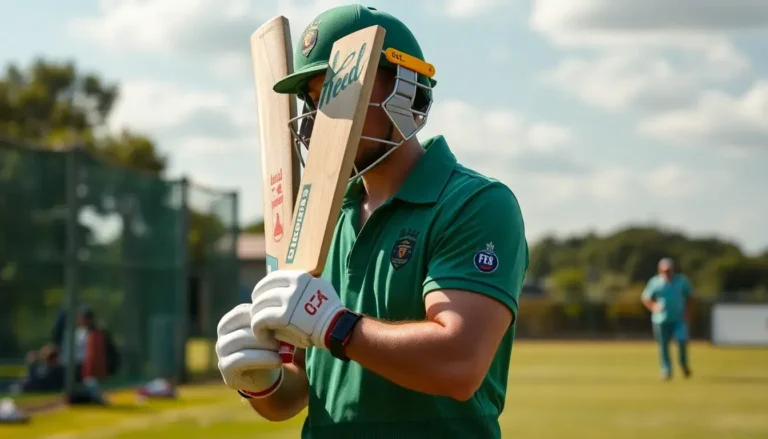Table of Contents
ToggleSwimming is more than just a fun summer activity; it’s a fantastic way to stay fit and healthy. Whether someone is a beginner looking to make a splash or an experienced swimmer aiming to improve their technique, mastering the basics can make all the difference. With the right tips and techniques, anyone can enhance their skills in the water.
From perfecting strokes to mastering breathing techniques, swimming offers countless opportunities for improvement. This article dives into essential swimming tips that will empower swimmers of all levels to boost their confidence and performance. With a focus on practical advice, readers can discover how to make the most of their time in the pool or open water, ensuring a safe and enjoyable experience.
Essential Swimming Tips for Beginners
Beginner swimmers can enhance their skills and confidence with fundamental techniques. The following tips focus on mastering the basics and building water confidence.
Mastering the Basics
- Body Position: Maintain a horizontal position in the water to reduce drag. Keep the head, hips, and feet aligned.
- Breathing Technique: Practice rhythmic breathing. Inhale through the mouth when the face is clear and exhale through the nose underwater.
- Kick Properly: Use a flutter kick from the hips, keeping legs straight but not rigid. Aim for a slight bend at the knees for flexibility.
- Arm Movement: Extend arms forward, enter the water with fingers first. Pull back smoothly and return arms to the starting position efficiently.
- Practice Floating: Start with back floats and front floats. These exercises build comfort in the water and improve buoyancy skills.
Building Confidence in Water
- Start in Shallow Water: Begin in shallow areas where standing is possible. This helps with acclimating to water conditions safely.
- Use Kickboards: Kickboards provide support while practicing kicks and strokes. They help beginner swimmers focus on arm movements without worrying about buoyancy.
- Incorporate Games: Engage in fun water games that promote comfort and skill development. Activities like “Follow the Leader” make learning enjoyable.
- Take Breaks: Regular breaks during practice sessions keep energy levels high. Short intervals prevent fatigue and allow for gradual skill advancement.
- Stay Relaxed: Keep a relaxed mindset to reduce anxiety. Engage in slow, deep breathing to promote calmness while in the water.
Improving Your Technique

Improving swimming technique enhances efficiency and speed while reducing fatigue. Focus on mastering breathing and stroke execution for optimal performance.
Breathing Considerations
Breathing technique plays a crucial role in swimming. Swimmers should exhale through the nose and inhale quickly through the mouth during the stroke cycle. Practicing bilateral breathing helps maintain balance and improves stroke symmetry. Swimmers can also benefit from timing breaths with arm strokes. Every two or three strokes, they can turn their head to breathe, which fosters a smoother rhythm and reduces head movement.
Streamlining Your Stroke
Streamlined strokes promote speed and conserve energy. Swimmers should keep their body elongated and aligned in the water. They can practice a flat body position by keeping their head in line with their spine. During each stroke, pushing water backward while maintaining a high elbow position maximizes propulsion. They must fully extend their arms during the entry phase and keep a consistent but relaxed kick for better stability. Regular drills focusing on technique, like finger-drag drills or catch-up drills, improve stroke efficiency.
Safety Tips for Swimmers
Swimming safety involves understanding potential hazards and adopting preventive measures. Awareness of both personal abilities and environmental conditions significantly enhances swimmer safety.
Understanding Water Safety
Understanding water safety starts with recognizing the risks associated with swimming. Swimmers should always check for lifeguards on duty, as their presence indicates an added layer of safety. Heed posted water conditions, such as current and temperature, to avoid hazards. Never swim alone; swimming with a buddy ensures assistance in emergencies. Lifesaving skills, including CPR, are crucial for enhancing safety awareness and preparedness. Swimmers should familiarize themselves with local emergency procedures and signals for distress.
Swimming in Different Environments
Swimming in different environments presents unique challenges that require adaptations. For ocean swimming, be wary of currents, tides, and waves. Understanding rip currents is vital; always swim parallel to the shore to escape them. In lakes, awareness of underwater hazards, like rocks or sudden drop-offs, is necessary. Ensuring reliable flotation devices are within reach adds an extra safety cushion. When swimming in pools, keep a keen eye on diving areas and ensure that children are supervised. Always adhere to facility rules to maintain safety standards. Whatever the environment, assessing conditions ensures safe and enjoyable swimming experiences.
Advanced Swimming Tips
Advanced swimmers can improve their performance by incorporating structured training techniques and strategies tailored for endurance and speed. These approaches focus on optimizing physical conditioning and technique refinement.
Interval Training Techniques
Interval training enhances speed and stamina through short bursts of high-intensity swimming followed by recovery periods. Swimmers can implement the following methods:
- Sprint Intervals: Alternate between sprinting for 25 meters at maximum effort and resting for 15-30 seconds. Repeat 8-10 times.
- Pyramid Intervals: Swim sets that progressively increase in distance, such as 50 meters, 100 meters, 150 meters, followed by a decrease back to 50 meters, with consistent rest intervals of 15-30 seconds between each set.
- Kick Sets: Use a kickboard to focus on powerful kicks. Swim 4-8 sets of 50 meters with brief rest intervals in between to strengthen leg muscles.
Endurance Building Strategies
- Long Distance Swims: Incorporate one long swim per week, gradually increasing distance up to 1500 meters or more at a moderate pace. Focus on maintaining form and breathing techniques.
- Mixed Distance Sets: Combine different distances like 100 meters, 200 meters, and 400 meters in a single session to build versatility and endurance.
- Drills with Purpose: Integrate drills such as catch-up drill or finger-drag to enhance stroke technique while maintaining continuous movement. This adds an endurance element to skill improvement.
Swimming offers a unique blend of fitness and fun that can be enjoyed by everyone. By focusing on essential techniques and safety measures swimmers can enhance their skills and confidence in the water. Whether a beginner or an advanced swimmer it’s crucial to prioritize technique and efficiency to maximize performance while ensuring safety.
Regular practice and a relaxed mindset can lead to significant improvements. Embracing the joy of swimming not only promotes physical health but also fosters a sense of community and enjoyment. With the right approach and dedication anyone can become a proficient swimmer and enjoy all the benefits that come with it.




